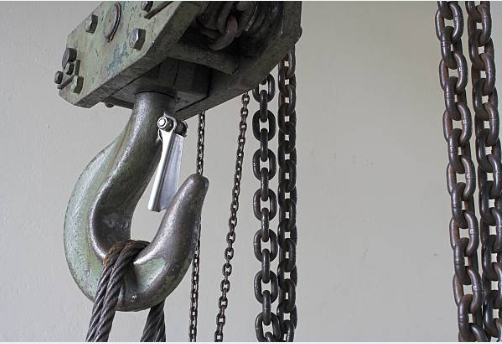Hoists are electro-mechanical or mechanical lifting devices that depend on mechanical advantage to support hanging loads and move objects vertically. The equipment distributes weight using gears or pulleys to transfer low force over long distances into greater forces applied over shorter distances. The chain is wound on a wheel or barrel and around other pulleys or gears with different radii.
The configuration is referred to as reeving, which determines how a load’s force will be transferred. Yale hoists are among the most respected names in the material handling industry. The brand has been manufacturing and supplying high-quality and high-performing hoists to customers for more than a century. Users specify Yale hoist for various applications, from pulp to offshore oil platforms to paper production.
The brand provides a wide range of wire rope products that do not waiver on performance matters. Primarily, Yale products were supplied through crane builders but are now used in various industries worldwide. This piece focuses on how a Yale hoist works and the tips you should know when using them.
How a Yale Hoist Works?
Yale hoists can either be electric or manual. Below is a breakdown of how each hoist works.
- How a Yale Manual Hoist Works
Manual hoists concentrate a low force with travel input into a high force but low travel output. That is why these hoists have a slow operation than electric hoists. They use several gears with different teeth numbers inside their lifting mechanism, activated by pulling the chain several times. This principle is responsible for completing the task of lifting an object.
A Yale manual chain hoist is suspended above the object meant to be lifted by mounting it on a rigid structural frame. The hoist has two frames: the hand chain, pulled by the hand, and the load chain, which is made of material of high strength. A user will attach a grab hook to the load being lifted.
Then, while they are located at a safe distance from the load, the user pulls the chain several times. As the user pulls the chain, it turns the cog causing the driveshaft to rotate. The driveshaft then transmits the force into a gear series with different numbers of teeth. The force turns the sprocket, pulling the load chain with the object.
- How a Yale Electric Hoist Works
On the other hand, Yale electric chain hoists use a load chain as the lifting medium. A motor pulls the load chain by converting mechanical energy into electrical energy. The hoist motor is inside a head-dissipating shell made of aluminum. The motor has a cooling fan to quickly dissipate heat during its continuous service and enable operations in hot environments.
A Yale electric hoist is suspended above the object to be lifted by mounting it on a rigid structural frame. You will attach a hook to the load chain’s end that grabs the load. To start lifting, a user switches on the hoist motor. The motor is incorporated with a brake responsible for stopping it by applying the requisite torque.
The motor creates torque and transmits it to gears inside the gearbox. The force is concentrated as it goes through a series of gears that rotate the chain wheel to carry the load. The chain load’s length is accumulated inside a chain bag as the object increases the distance above the ground.
Tips for Using a Yale Hoist
Below are some of the tips when using a Yale chain hoist.
- Understand Common Hoist Problems
The first step in using a hoist is understanding how it works. Understand the functioning and effectiveness of the hoist and look for wear and tear that might be slowing it down. Hoists work by rotating a chain; wearing it is your most common challenge. Ensure you maintain the equipment regularly to extend its lifespan.
- Keep the Hoist Lubricated and Clean
Rust is the most common cause of tears on a hoist. Chains become difficult to move due to stiffness as a result of rust and grit buildup. You will likely have to dismantle your chain to clean and oil it properly. You can do that once or twice a year, depending on your primary use of the hoist.
- Conduct Regular Inspections
Your hoist operator needs to perform a brief inspection daily to ensure that the equipment performs optimally. You will also need to conduct an in-depth monthly assessment to understand the damage to the equipment.
- Carry Out Necessary Testing
You need to test your hoist regularly and inspect it to ensure it is functioning correctly. Perform a service load test at least quarterly to observe how well the equipment performs when lifting loads at different heights.
Wrapping Up
Hoists are valuable equipment for lifting and lowering equipment in different settings. Yale hoists are a reputable brand that meets all your lifting standards. They offer excellent quality and performance, and their reputation is unmatched.
It would be best to understand how a hoist works and the tips to use it properly. This will help you follow proper safety procedures and avoid injuries and accidents. Also, ensure you conduct regular maintenance to ensure your Yale hoist operates reliably and safely over time.




